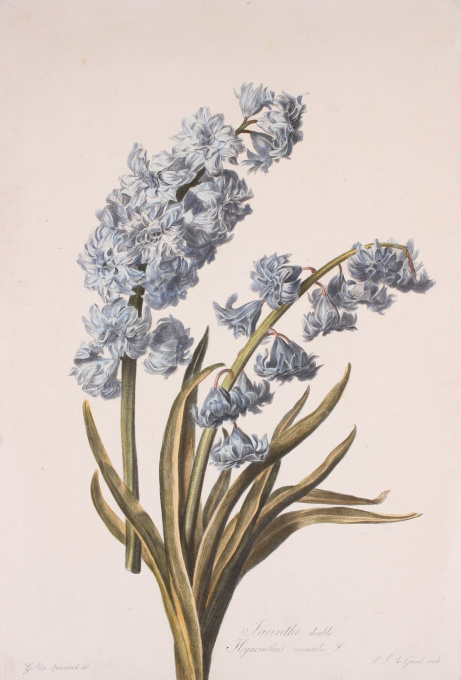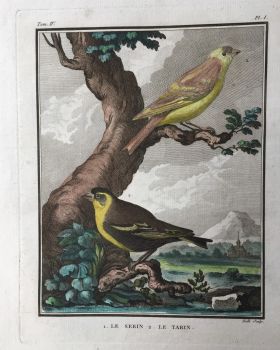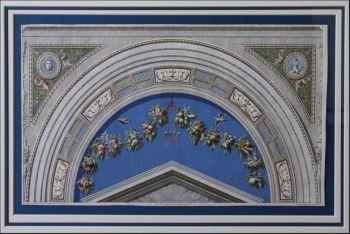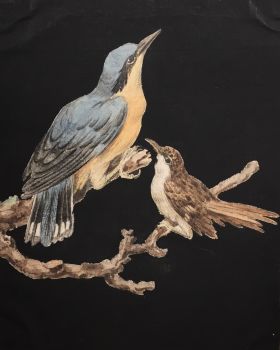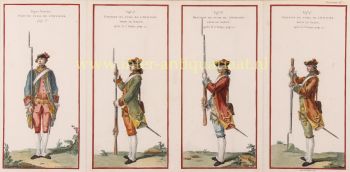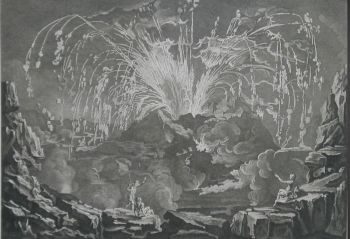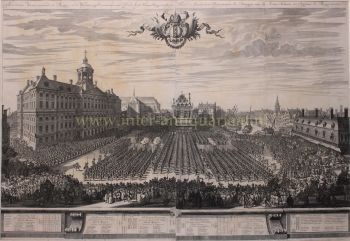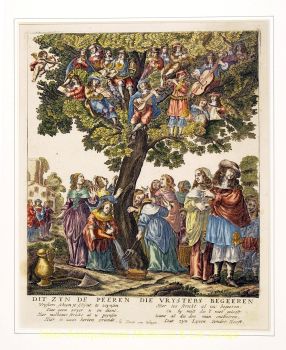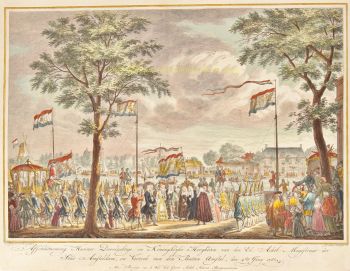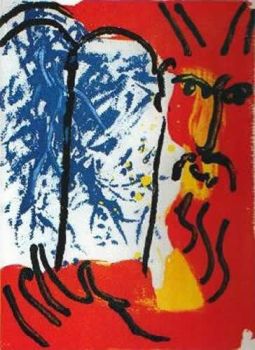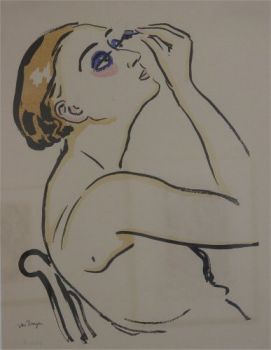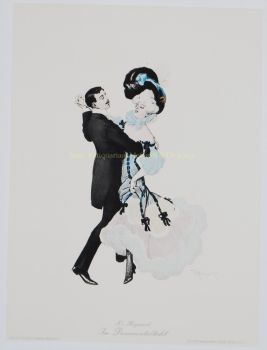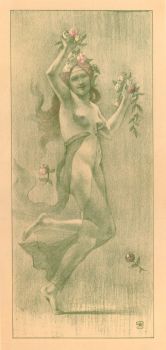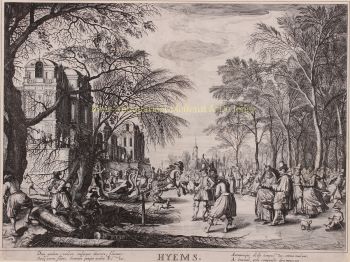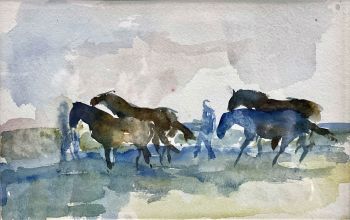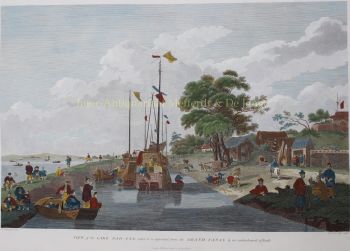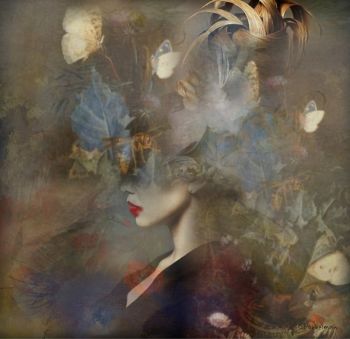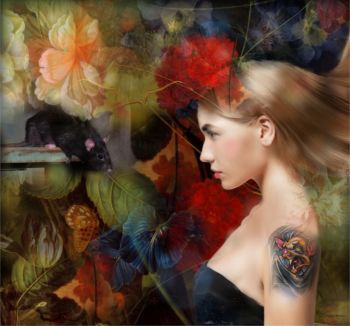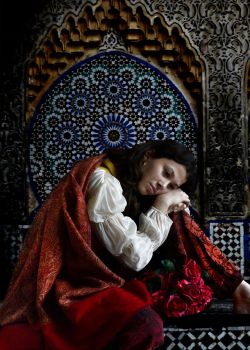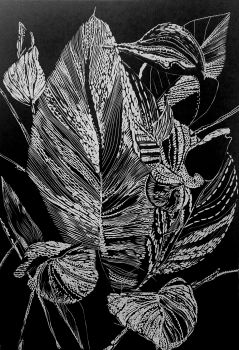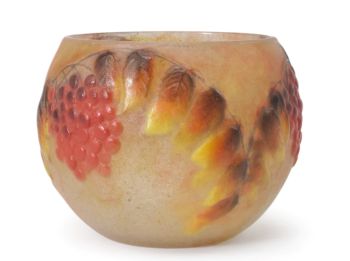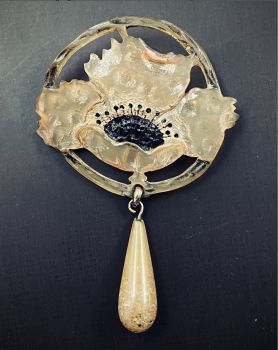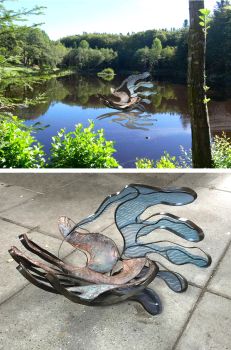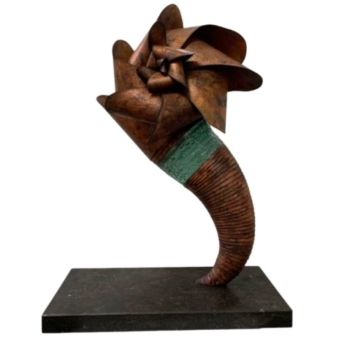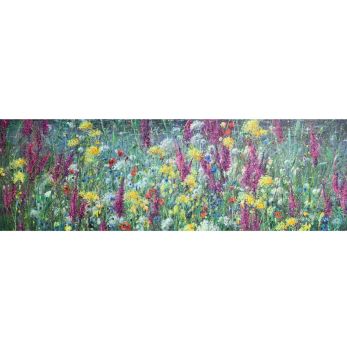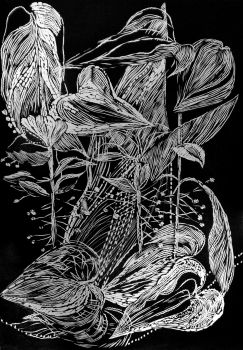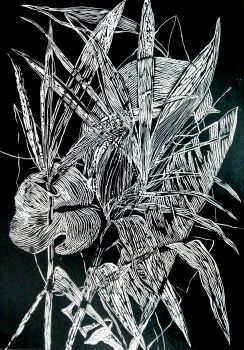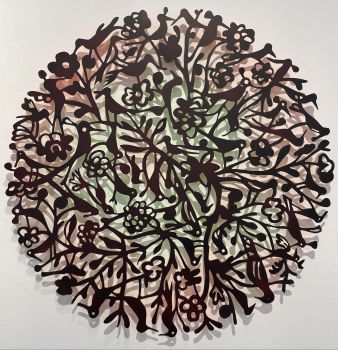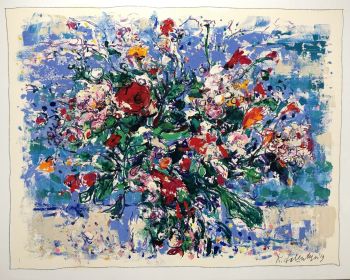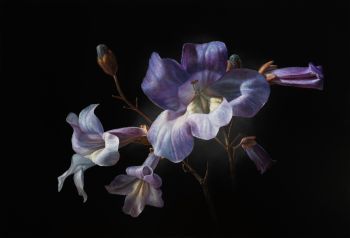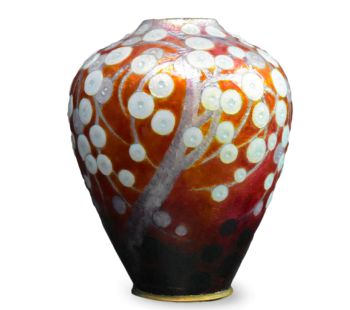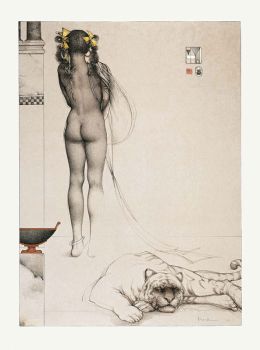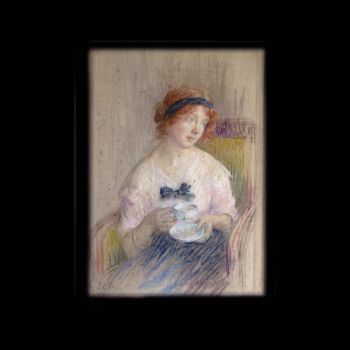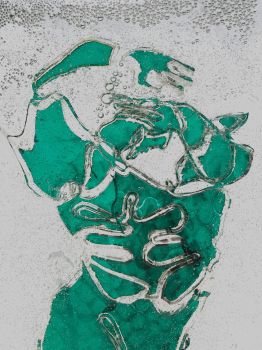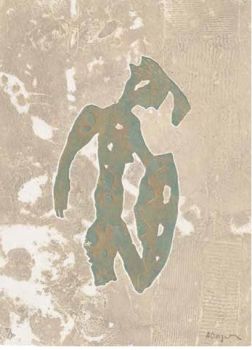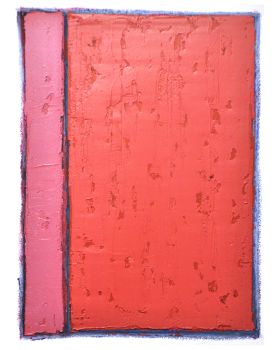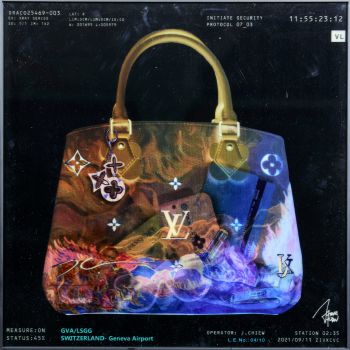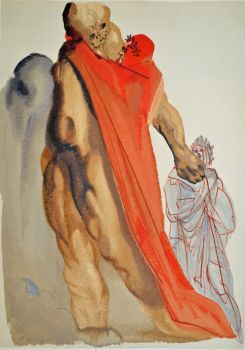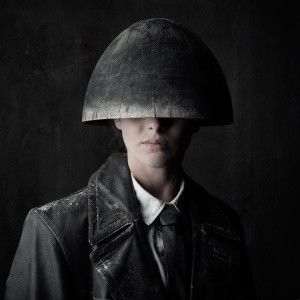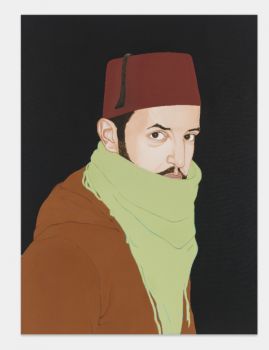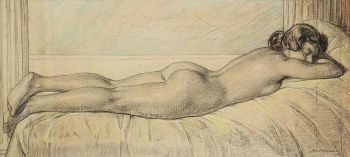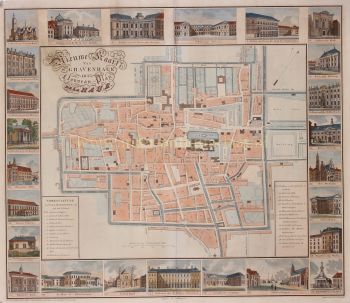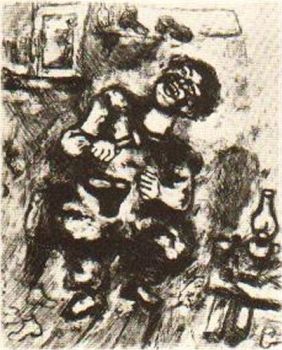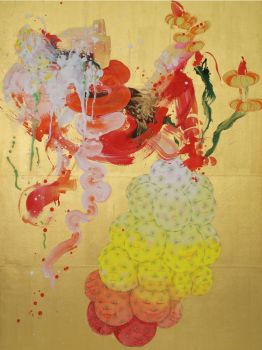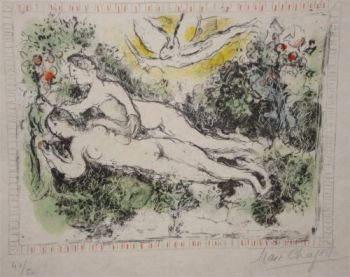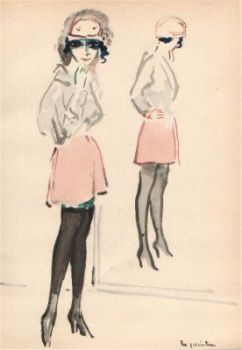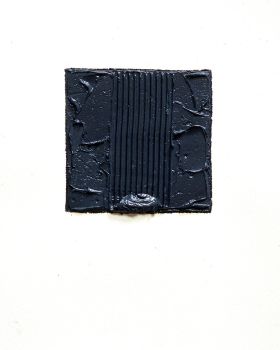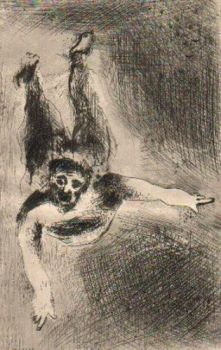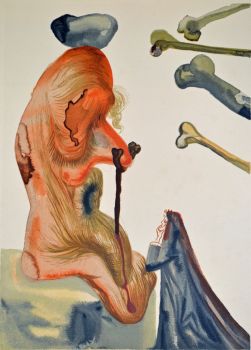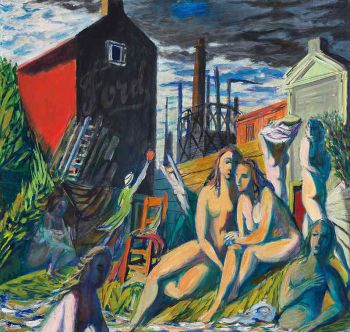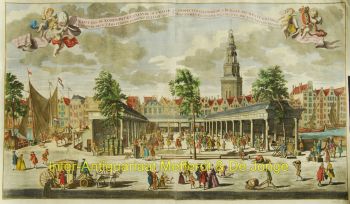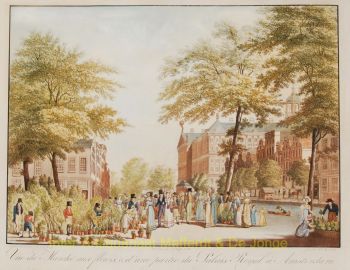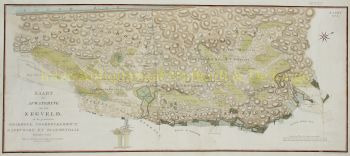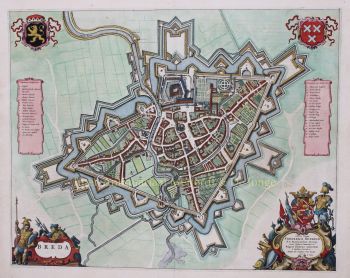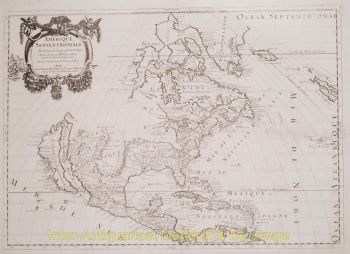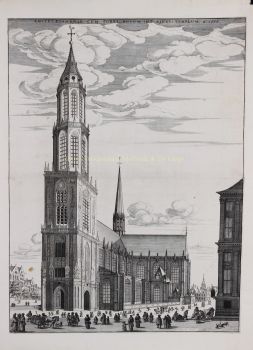Dutch hyacinth 1799 - 1801
Gerard van Spaendonck
Inter-Antiquariaat Mefferdt & De Jonge
- About the artwork“Jacinthe double - Hyacinthus orientalis”, stipple engraving made by P.F. le Grand after a drawing by Gerard(us) van Spaendonck from the "Fleurs dessinées d'après nature", published between 1799 and 1801. With original hand colouring. Size (print) approx. 50 x 33 cm. In Greek mythology, Hyacinth was a very beautiful Spartan prince and lover of the god Apollo. Hyacinth was also admired by the God of the West wind Zephyrus. But Hyacinth chose Apollo. With Apollo, Hyacinth visited all of Apollo's sacred lands in the chariot drawn by swans. Apollo taught his lover the use of the bow, of music and the lyre, the art of prophecy, and exercises in the gymnasium. One day, Apollo was teaching him the game of quoit. They decided to have a friendly competition by taking turns to throw the discus. Apollo threw first, with such a strength that the discus slit the clouds in the sky. Hyacinth ran behind it to catch it and impress Apollo, but as the discus hit the ground, it bounced back, hitting Hyacinth's head and wounding him fatally. Alternatively, Zephyrus is held responsible for the death of Hyacinth; jealous that Hyacinth preferred the radiant Apollo, Zephyrus blew Apollo's quoit boisterously off course to kill Hyacinth. Apollo's face turned pale as he held his dying lover in his arms. He used all his medicinal skills and even tried giving ambrosia to heal Hyacinth's wound, but in vain, for he could not cure the wound. When Hyacinth died, Apollo wept, blaming himself. He wished to become a mortal and join his lover in death. However, as that was not possible, Apollo promised that he would always remember Hyacinth in his songs and the music of his lyre. From Hyacinth's spilled blood, he created a flower, the hyacinth, and on its petals inscribed the words of despair, "AI AI" – "alas" Gerard van Spaendonck (1756-1842) studied with decorative painter Willem Jacob Herreyns in Antwerp. In 1769 he moved to Paris, where in 1774 he was appointed miniature painter in the court of Louis XVI. In 1780 he succeeded Madeleine Françoise Basseporte as professor of floral painting at the Jardin des Plantes, and was elected a member of the Académie des beaux-arts shortly afterwards. Van Spaendonck contributed to over fifty works of Les Vélins du Roi, a famous collection of botanical watercolours owned by French royalty. From 1799 to 1801 he published twenty-four plates as part of his Fleurs Dessinees d'apres Nature (Flowers Drawn from Life), which were high-quality engravings for students of floral painting. Today the Fleurs Dessinees d'apres Nature are considered among the best botanical engravings in the world. Stipple engravings with which one is able to differentiate between different tones of gray, turned out to be highly suitable for depicting botanical details, a method that Van Spaendonck also taught his pupil Pierre-Joseph Redouté. Like other famous flower painters, Van Spaendonck was also technically perfect: in oil, watercolour, pen or pencil, on any scale. With attention to every minute detail and elegance and sophistication of the composition, he shows his mastery. Like Jan van Huysum, Van Spaendonck understood the zeitgeist and created flower compositions that matched the taste of the public of around 1800. He combined the traditional Dutch way of representing flowers with French sophistication and good taste. Price: Euro 1.250,-
- About the artist
Gerard was an older brother of Cornelis van Spaendonck (1756-1840), who was also a well-known painter. In the years 1760-1769 he studied in Antwerp with the decorative painter Willem Herreyns. In 1769 he moved to Paris, and in 1774, through the mediation of Claude-Henri Watelet, at the age of 28, he was appointed miniature painter at the court of Louis XVI. He exhibited for the first time in 1777. In 1780 he succeeded Françoise Basseporte (1701-1780) as professor of flower painting at the Jardin des Plantes. Shortly afterwards he was elected a member of the Académie des beaux-arts.
Van Spaendonck painted in both oil and watercolor. He made more than fifty works for the Vélins du Roi, a renowned collection of botanical watercolors owned by the French royal family. From 1799 to 1801 he published 24 plates of his Fleurs Dessinées d'après Nature (Flowers drawn from life); high quality engravings for flower painting students. Today Fleurs dessinées d'après nature is a highly regarded book in the field of flower painting.
In 1788 Van Spaendonck was appointed advisor to the Académie, and in 1795 he was one of the founders of the Institut de France. In 1804 he was awarded the Legion of Honour. Shortly afterwards he was ennobled by Napoleon Bonaparte. Van Spaendonck died in 1822 at the age of 76.
At Groeseindstraat 99 in Tilburg, a plaque can be seen where the birthplace of the Van Spaendonck brothers used to be. Besides painter Karel Appel, Gerard van Spaendonck is the only Dutchman to be buried at Père Lachaise in Paris. Gerard is right behind Chopin's grave.
Are you interested in buying this artwork?
Artwork details
Related artworks
- 1 - 1 / 1
- 1 - 4 / 24
- 1 - 4 / 24
- 1 - 4 / 24
- 1 - 4 / 12

